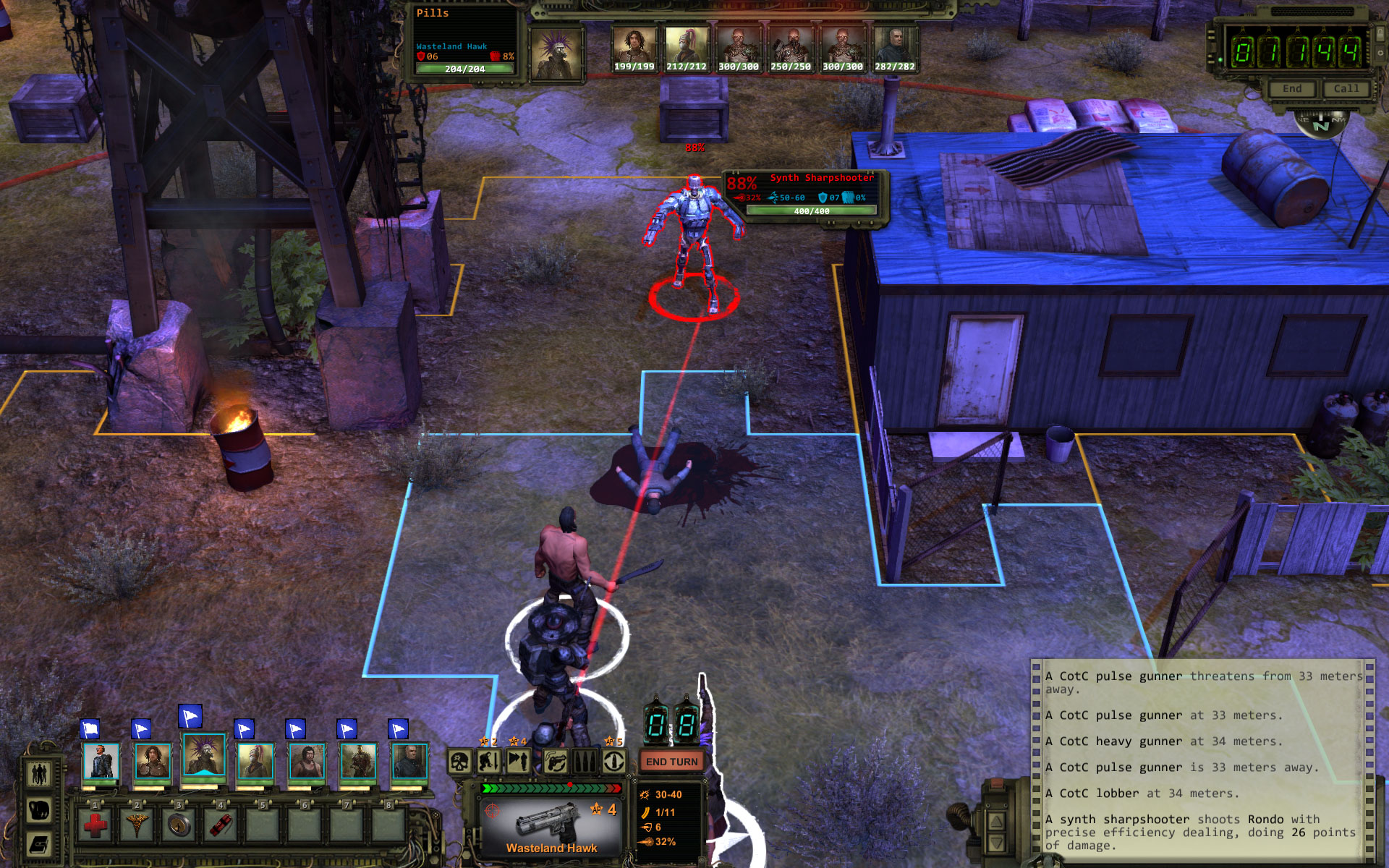Our Verdict
An excellent RPG despite its glitches, with combat and writing as good as its predecessors'
PC Gamer's got your back
Expect to pay: £30/$40
Release: Out now
Publisher: inXile Entertainment
Developer: inXile Entertainment
Multiplayer : None
Link: bit.ly/1mi0ujv
There's a mad monk up ahead. He's wearing little more than rags, his body hunches over with a great burden. His face is twisted and warped. Behind him is a woman with a small pack; ahead of him is a gnarly raider.
My guide through the dusty canyon cautions me against interfering as the raider demands the woman's goods. She begs him to stop, for both their sakes, but it's too late for that. The hunchback monk, a disciple devoted to the nuclear god Titan and The Great Glow, sworn to protect his charge.
He rushes forward, shouting a prayer, and then detonates the small warhead he carries. A mushroom cloud emerges from the blinding light, vaporizing the monk and the raider. The woman, however, now lays legless before me.
"Kill me," she croaks. And I do, but not before I take her scrap.
Wasteland 2 pulls few punches. It shouldn't: as both a post-apocalyptic RPG and the latest in the new wave of 'hardcore' role-playing games, I expected it to be both difficult and dark. It's the sequel to the game that inspired Fallout, and the product one of the most high-profile Kickstarter campaigns ever. That's a lot of weight to carry, and inXile founder Brian Fargo has called it the most important game of his career. That a sequel to a 26-year-old game happened at all is pretty amazing. That it's also a good game, in spite of a few bugs and design issues, is astounding.
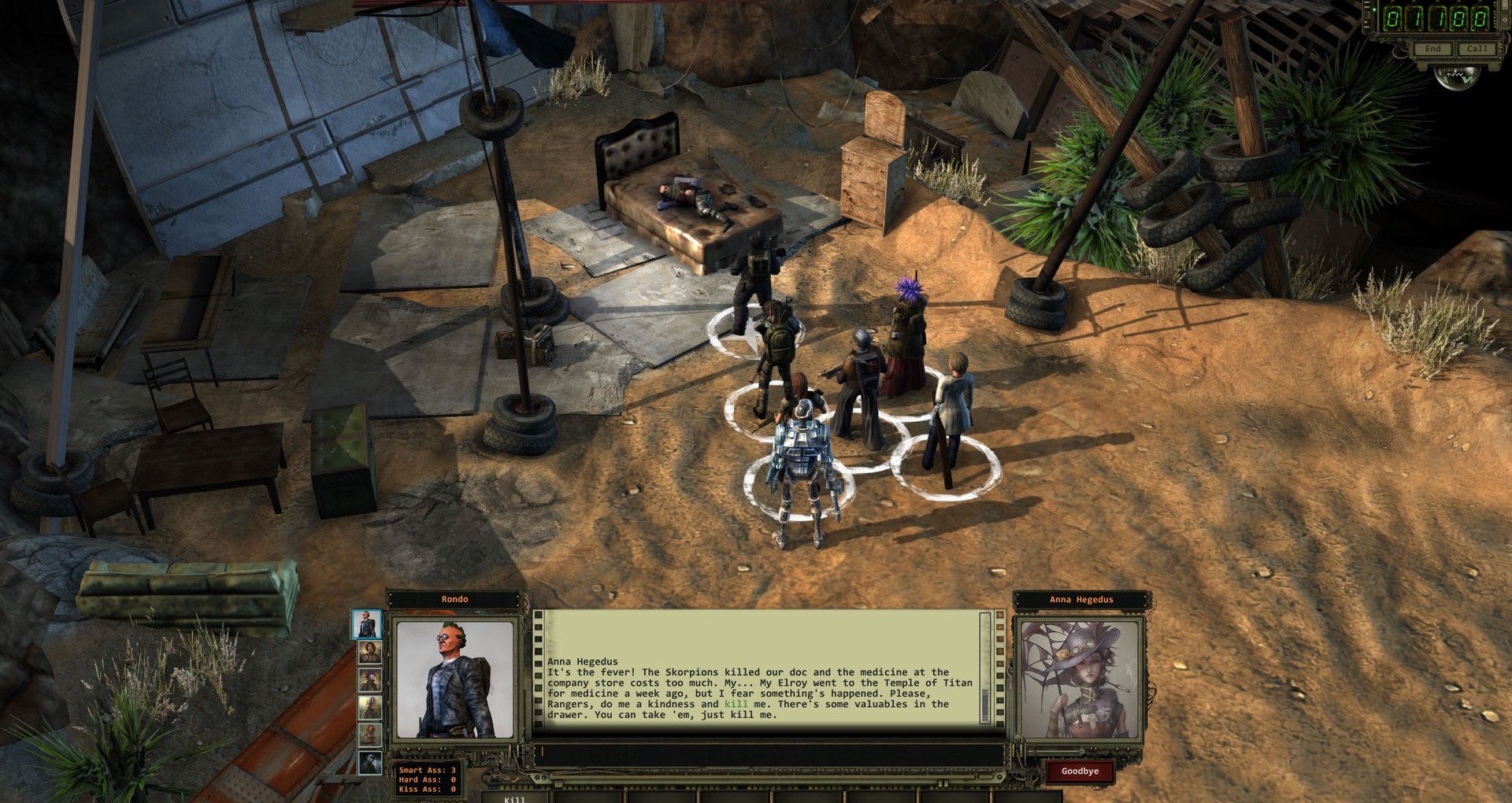
Building character
Wasteland 2 begins much as its predecessor did—choose or create four new recruits to the shining beacon of law and order in post-nuke Arizona, the Desert Rangers. One of your own has been murdered while investigating strange new radio transmissions, and you must solve his murder and pick up the trail he was on.
Keep up to date with the most important stories and the best deals, as picked by the PC Gamer team.
inXile provides a nice selection of premade characters, but I enjoyed the characters I created most. Each character has six basic stats that affect a further set of derived abilities. Coordination, for instance, affects your ability to shoot a gun, but also how steady your hands are when jimmying a lock or disarming a bomb. These abilities also tie into your choice of skills. Some are obvious: Brawling affects how good you are at bare-fisted fighting, Handguns shows your skill with a pistol or small gun. Others seem useless at first; who would focus on repairing toasters in a post-apocalyptic world? I did, and I'm proud to report that some of my best experiences (and loot) came from bringing life to a discarded appliance.
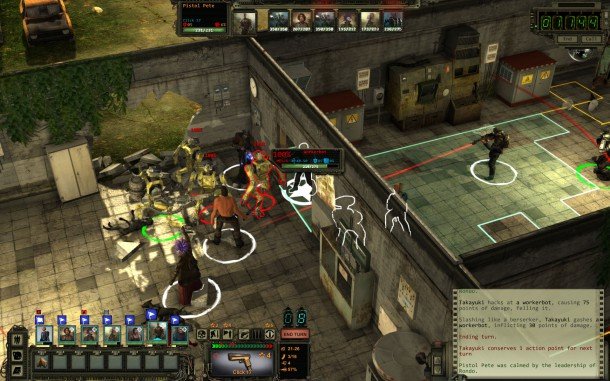
None of the skills available are useless, which makes focusing on a few difficult. I routinely found myself wishing I had a character or companion with Brute Force who could break open a safe I had permanently locked through a critical failure. Animal Whisper doesn't lead to surreal bunny conversations as in Divinity: Original Sin, but it does help when herding cattle for a quest. I completed one difficult late-game combat encounter with a lost puppy I had used Animal Whisperer on, who followed me into combat and viciously murdered three synthetic enemies. It takes a while to learn how the skills work in the world, but their usefulness is ever present.
Even with four characters under my control, though, I struggled to find a balanced mix of skills and abilities. This is by design, and it nicely complements the companion NPCs inXile has created to join me on my travels. I could add up to three followers for a max party size of seven. Each NPC has her own agenda, and if our goals don't align, they can leave in a huff. A brash warrior named Takayuki joined me after I saved his mom from a mining cave-in, bringing with him strong explosive skills, and with that, a surefire way to disable traps on lockers and chests. Another companion, Pistol Pete, asked me to save his town from an invading gang—if I chose to work with the gang instead, Pete would abandon me, taking his valuable firearms and bartering skill with him.
There are a whole lot of companions like this in the game, and I already know I didn't encounter them all. Often, they're normal NPCs who can be persuaded into joining, but could just as easily turn into a foe. Rose, the scientist and doctor from Arizona's Ag Center, joined my party to help solve a mutating plant problem, but I could have just as easily killed her to get the access codes I needed.
I liked that, right as my squad started to feel unstoppable, I'd encounter a massive cannon-wielding robot.
Take aim
Combat in Wasteland 2 is turn-based, the new hotness in CRPGs. It feels like a mix of Firaxis' XCOM and Black Isle's Fallout: encounter a group of enemies, get a turn order, and then spend action points on moving and attacking. Cover is useful, adding both a defensive and aim bonus, but is also often destructible, so maybe those crates aren't as safe as you thought. Each of the game's many weapons require a certain number of action points to fire or reload, and many can fire bursts instead of single shots, at the cost of your aim. Explosives such as TNT and grenades do area damage.
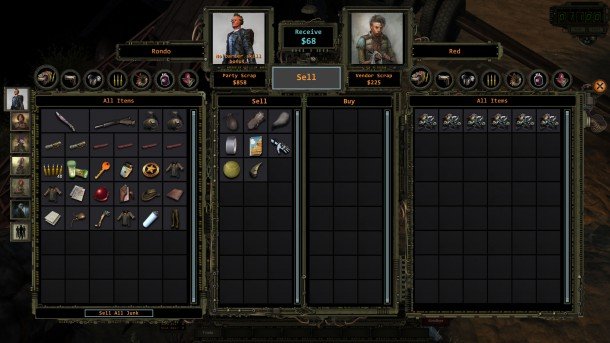
Some weapons just make more sense than others. Shotguns plagued me as they fire in a cone and can do heavy friendly fire damage. I ultimately stopped using them and focused on energy weapons, which can get heavy but do strong damage in later fights. The weaponsmithing skill let me break down old and unwanted weapons into usable mods, customizing my mid-game and endgame weapons so that I rarely missed a shot and did tremendous damage with sniper rifles. Picking off a mutated honey badger from from 500 meters feels hugely satisfying, and saves me the vicious bastard's up-close attacks, which would mess me up in the early parts of Arizona.
I was never bored by Wasteland 2's fights, and every battle had the chance to go horribly wrong for me. I liked that, right as my squad started to feel unstoppable, I'd encounter a massive cannon-wielding robot that'd blow two teammates away. I also love that many skills stayed relevant during a battle—to take out an army of robots, I'd use my Computer skill to convert them to my side and watch as they bashed each other.
I do wish that inXile had included stealth in the game, however. Its absence means conflicts will always become straight-up brawls, and there were multiple times I'd wished I could sneak past an enemy or NPC to set up a more tactical approach.
Neighborhood watch
The people of the wastes are rarely friendly, but they often need your help. There were few easy decisions as I struggled to prioritize one group over another. Early on, for instance, I received distress signals from Hightown and an Agricultural Center, both needing urgent assistance. I saved the Ag Center first, battling mutated plants and giant, man-eating rabbits, but when I got to Hightown, the attacking raiders had killed everyone. Oops.
Once you leave Arizona, almost halfway through the game, you'll meet even stranger people in LA. God's Militia are standard religious fanatic types, punishing sinners down the barrel of a gun. A group of sentient robots lead by an evil AI called Dugan wants to destroy humanity, while the Children of the Citadel and its cyborg leader, Matthias, promise immortality by joining flesh with machinery. The people of Rodina have been enslaved by a raider gang originally hired as protection, and a plague in the town has all but wiped out the farming population. And the people of Hollywood just want to party, be pretty, and take their drugs, which are turning them into zombies.
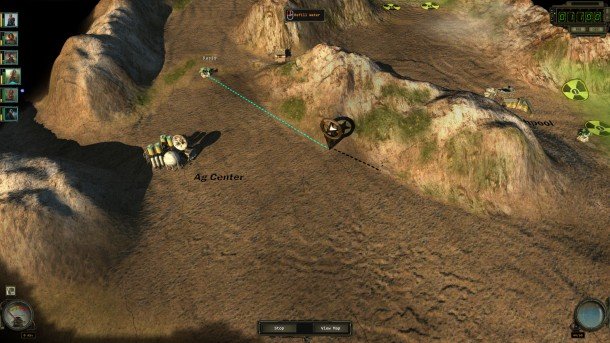
While the Arizona part of Wasteland 2 is fun, it's made up of areas that long-time RPG fans had explored in the first Wasteland, 26 years ago. It's a nice nostalgia trip, but the LA wetlands is where the game opens up to its full potential, and feels most like the wasteland of Fallout and Fallout 2. The cities are more complex, with more intricate, grey area-leaning side quests that feed into one another, and the factions are more interesting.
Angel Oracle is a stadium taken over by the Mannerites, who believe the key to restoring society is through extreme politeness. On a call-in radio show, their leader, Mr. Manners, councils a wife and mother who must choose to save either her husband or her children from raiders. Manners suggests the husband, since it's not becoming in society to be a widow and, “you can always have more” kids. Polite does not mean good, clearly.
It's here that Wasteland 2's writing and voice work shines brightest, in the LA faction's power struggles and competing radio broadcasts. Both the Mannerites and their splinter offshoot rivals, the get-ahead-in-life Robbersons, are inspired by self-help books, and watching the two groups tear each other apart over philosophies that seem trite today is amazing.
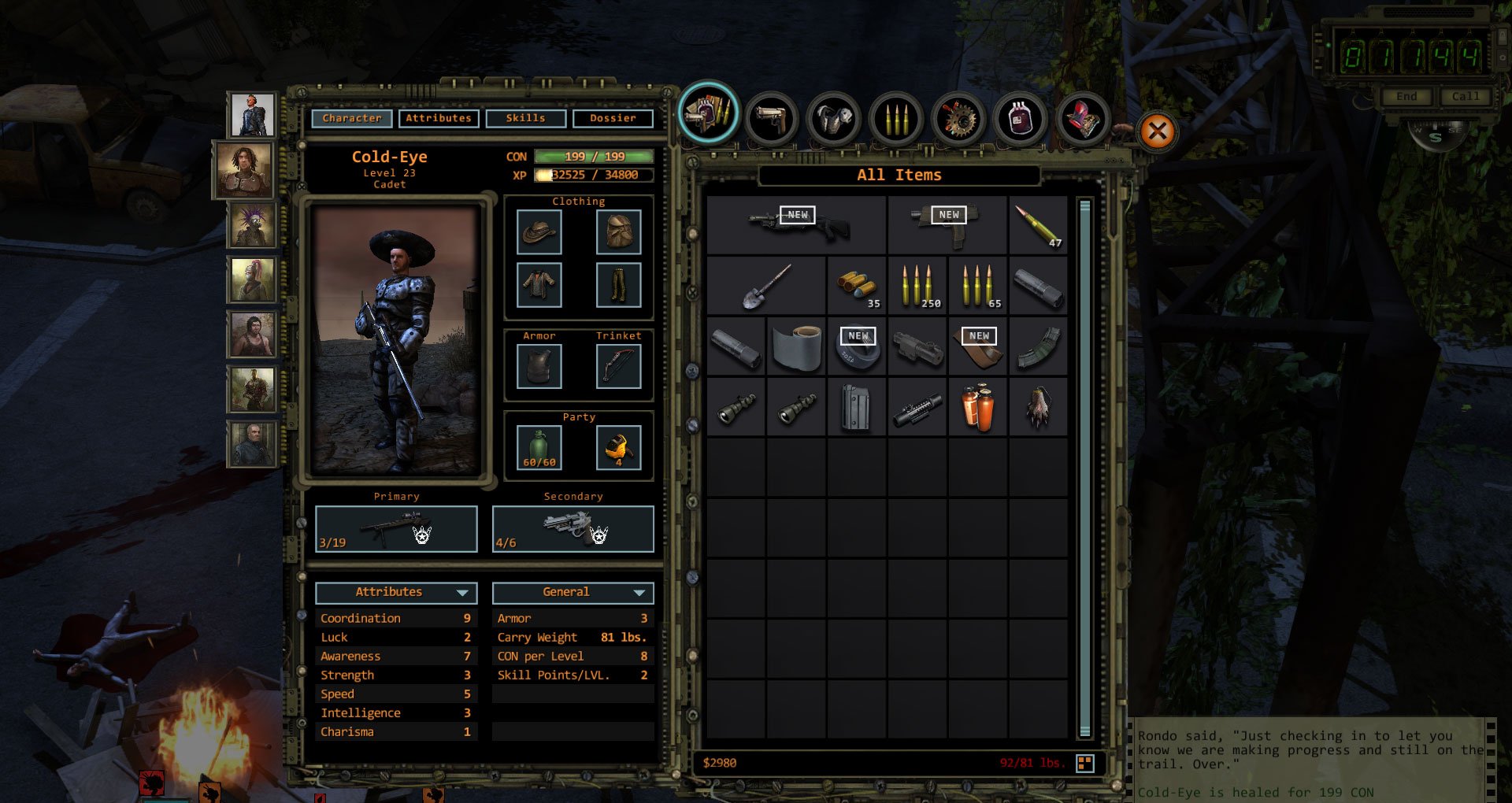
Rough rider
The world inXile built is fascinating to explore, but gets blemished by a few outstanding bugs and issues. I encountered a few pathing issues, including one in a late-game fight that required a reload. My review build still featured a few small typos and glitches, such as world interactions that wouldn't actually interact, side quests that would hang if I resolved them in unconventional ways, and camera freezes during battles where I'd see the lighting shadows move, but not the camera itself. Most of these occurred in the LA portion of the game, the side that hasn't benefitted from months of intense beta testing. Thankfully, none of the issues hit game-breaking status
Other problems are intrinsic to the game, though. Almost all of the loot is random, which means my time spent carefully de-trapping and unlocking a combination safe would sometimes only reward me with a handful of bullets and a wasted hour. The lack of stealth remains unfortunate—particularly in a big encounter in Damonta that took me five tries to get the result I wanted.
Sadly, Wasteland 2 is not the prettiest game. Character models look okay from a distance, but can be ugly up close. Some of that is made up for by the fun clothing you can acquire—my sniper walked around in a gorilla suit for a third of the game—but there's a fair amount of reused models and assets, and even the wonderfully illustrated NPC portraits repeat for separate characters. Environments also follow some basic patterns—here's the desert, here's a ruined village, here's the remains of Hollywood Boulevard—and while each area does feel distinct, they never look overwhelmingly impressive. I do appreciate that inXile gives lots of camera controls, though, including a huge zoom-out range.
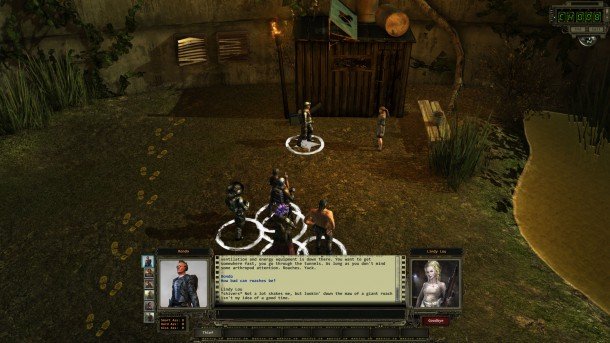
These are issues, but they're surmountable. In my 50 hours in Wasteland 2, I mostly found myself merely annoyed by them, and almost never felt the bugs were in the way. Weighed against the sheer amount of content in the game—my 50 hours skipped entire subplots and side areas—they're small problems. I'm already planning my second playthrough, imagining the toasters I can repair this time around, or wondering if it's time to merge my body with the cybernetics Matthias' cult offers. I want to know what happens if I save the town of Highpool, or retrieve a warhead from the Servants of the Mushroom Cloud, or if I can help the street kids in Hollywood stay safe.
It took Brian Fargo 26 years to get to revisit the world of the Desert Rangers. It took a $3 million Kickstarter campaign to fund inXile's initial development. And it took a welcome resurgence in complex computer role-playing games to make it all possible. Wasteland 2 lives up to its legacy. It's a game that has come full circle—from inspiration for Interplay's Fallout, to spiritual successor for that franchise's roots. This wasteland is deep and dark and dangerous, and a great place to get lost in.
An excellent RPG despite its glitches, with combat and writing as good as its predecessors'
